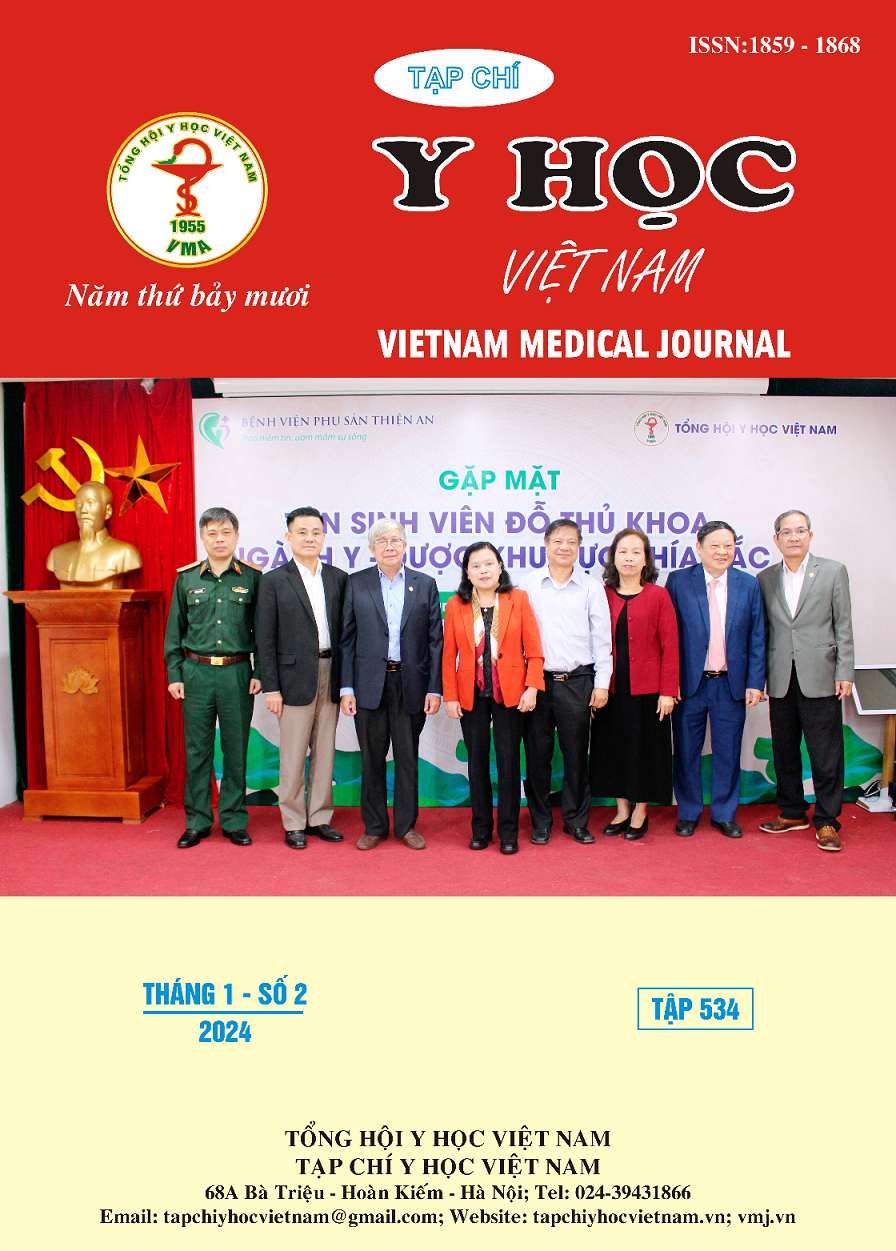CHARACTERISTICS OF FAMILIAL EXUDATIVE VITREORETINOPATHY
Main Article Content
Abstract
Purpose: To describe the clinical and paraclinical features of familial exudative vitreoretinopathy (FEVR) in children. Method: The retrospective descriptive study was conducted on 31 patients treated for Familial Exudative Vitreoretinopathy (FEVR) at the Vietnam National Eye Hospital from August 2022 to May 2023. Results: The majority of the patients were under 6 years old (70.97%), with a nearly equal gender ratio. Most patients exhibited bilateral involvement (77.42%) rather than unilateral eye involvement. Common presenting symptoms upon admission included reduced visual acuity (29.03%), strabismus (41.94%), or white pupillary reflex (6.45%). Vascular lesions primarily occurred in the temporal region (100%) compared to the upper (58.06%), lower (38.71%), and nasal (22.58%) regions. Through examination, predominant findings included retinal exudates (87.09%), retinal detachment (29.71%), and neovascularization (12.9%). Conclusion: The majority of familial exudative vitreoretinopathy (FEVR) patients belong to the age group under 6 years old, with a roughly equal distribution between males and females, and a higher prevalence of bilateral involvement. The primary clinical symptoms include reduced visual acuity, strabismus, or white pupil reflex. Paraclinical examinations, such as fundus examination using laser scanning, should be utilized for FEVR detection.
Article Details
References
2. Dương Thu Trang Đ.M.H. and Nguyễn Minh Phú P.M.C. (2022) ‘Tổng quan về bệnh dịch kính - võng mạc xuất tiết có tính chất gia đình’, Bản B của Tạp chí Khoa học và Công nghệ Việt Nam, 64(7).
3. Gilmour, D.F. (2015) ‘Familial exudative vitreoretinopathy and related retinopathies’, Eye, 29(1), pp. 1–14.
4. Lee, J. et al. (2019) ‘Longitudinal changes in the optic nerve head and retina over time in very young children with familial exudative vitreoretinopathy’, Retina (Philadelphia, Pa.), 39(1), pp. 98–110.
5. Lyu, J. et al. (2017) ‘Ultra-wide-field scanning laser ophthalmoscopy assists in the clinical detection and evaluation of asymptomatic early-stage familial exudative vitreoretinopathy’, Graefe’s Archive for Clinical and Experimental Ophthalmology = Albrecht Von Graefes Archiv Fur Klinische Und Experimentelle Ophthalmologie, 255(1), pp. 39–47.
6. McElnea, E. et al. (2018) ‘Paediatric retinal detachment: aetiology, characteristics and outcomes’, International Journal of Ophthalmology, 11(2), pp. 262–266.
7. Ranchod, T.M. et al. (2011) ‘Clinical presentation of familial exudative vitreoretinopathy’, Ophthalmology, 118(10), pp. 2070–2075.
8. Sızmaz, S., Yonekawa, Y. and T. Trese, M. (2015) ‘Familial Exudative Vitreoretinopathy’, Turkish Journal of Ophthalmology, 45(4), pp. 164–168.


